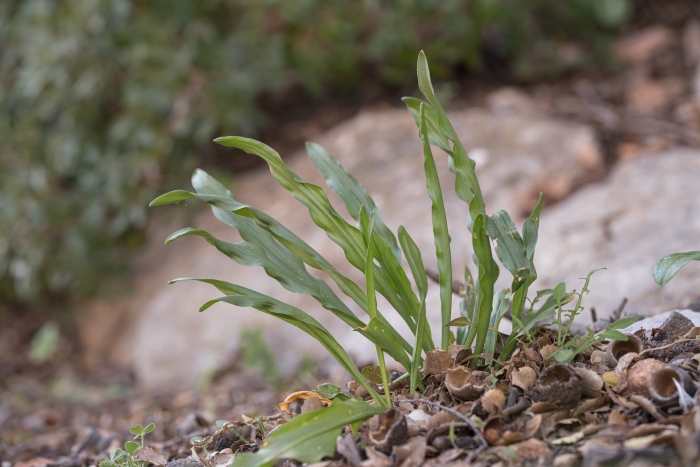Slender-Leaf Biarum
(Biarum tenuifolium)
Slender-Leaf Biarum (Biarum tenuifolium)
/
/

Eleftherios Katsillis
CC BY 4.0
Image By:
Eleftherios Katsillis
Recorded By:
Copyright:
CC BY 4.0
Copyright Notice:
Photo by: Eleftherios Katsillis | License Type: CC BY 4.0 | License URL: http://creativecommons.org/licenses/by/4.0/ | Rights Holder: Eleftherios Katsillis | Publisher: iNaturalist | Date Created: 2024-03-22T14:18:59-07:00 |























Estimated Native Range
Summary
Biarum tenuifolium, commonly known as the Slender-leaf Biarum, is a tuberous perennial herb native to rocky, open areas and scrublands in the Eastern Mediterranean region, including Greece, Turkey, and Cyprus. It is a small plant, often reaching only 10-20 centimeters in height, with a spread of around 10 centimeters. The Slender-leaf Biarum is notable for its distinctive spathe and spadix flower structure typical of the Araceae family, with flowers that are usually greenish-white, sometimes with purple streaks, and bloom in the autumn. The flowers are not particularly showy, but they are intriguing due to their unusual form and the fact that they emit a strong odor to attract pollinators. This species does not produce significant foliage, bark, berries, or fruit that are notable in cultivation.
The Slender-leaf Biarum is valued for its unique appearance and is often used in rock gardens or as an unusual specimen in botanical collections. It requires well-drained soil, preferably with some gravel or sand to mimic its native rocky habitats, and it thrives in full sun to part shade. While it is drought-tolerant once established, it benefits from occasional watering during prolonged dry periods. There are no widely recognized cultivars in popular cultivation. Potential problems include rot if kept too wet, especially in winter. It is not known to be invasive when grown outside its native range, but its tubers can be attractive to rodents.CC BY-SA 4.0
The Slender-leaf Biarum is valued for its unique appearance and is often used in rock gardens or as an unusual specimen in botanical collections. It requires well-drained soil, preferably with some gravel or sand to mimic its native rocky habitats, and it thrives in full sun to part shade. While it is drought-tolerant once established, it benefits from occasional watering during prolonged dry periods. There are no widely recognized cultivars in popular cultivation. Potential problems include rot if kept too wet, especially in winter. It is not known to be invasive when grown outside its native range, but its tubers can be attractive to rodents.CC BY-SA 4.0
Plant Description
- Plant Type: Herb
- Height: 0.1-0.2 feet
- Width: 0.2-0.3 feet
- Growth Rate: Slow
- Flower Color: Green, Purple
- Flowering Season: Spring, Summer
- Leaf Retention: Deciduous
Growth Requirements
- Sun: Full Sun, Part Shade
- Water: Low
- Drainage: Fast
Common Uses
Drought Tolerant, Low Maintenance, Rock Garden
Natural Habitat
Rocky, open areas and scrublands in the Eastern Mediterranean
Other Names
Common Names: Long-Leaved Biarum, Eastern Biorum
Scientific Names: , Biarum tenuifolium, Arum tenuifolium, Homaida tenuifolia, Stenurus tenuifolium,
GBIF Accepted Name: